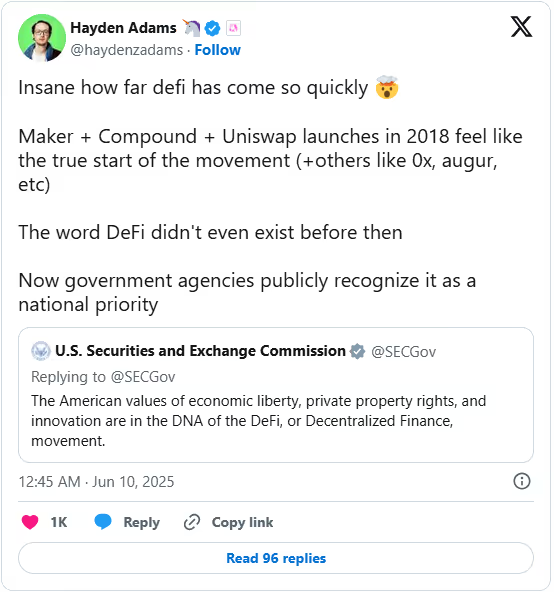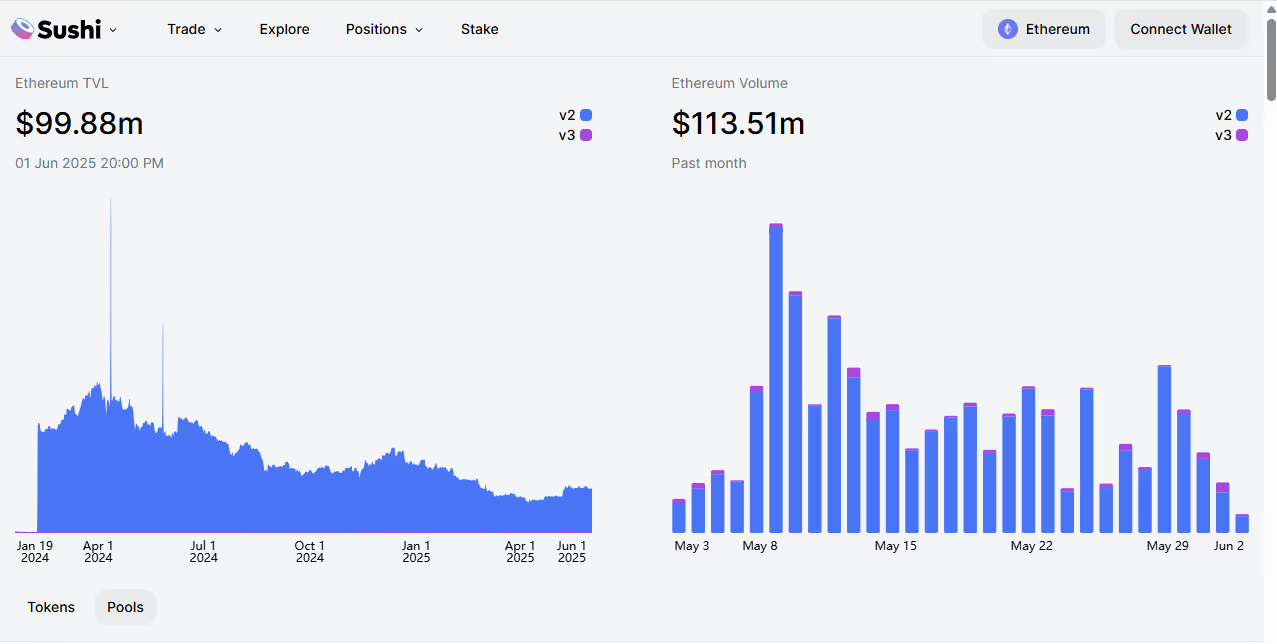
DeFi trading continues to grow year after year.
Experts predict the global Decentralized finance (DeFi) market will reach over $87 billion in value by 2030, and a big driver of that growth is in trading activity. Volumes are up, the tooling has matured, and the user base is broader than ever.
Still, when it comes to infrastructure, many DeFi trading solutions are living in the late 2010s, with fundamental processes like wallet creation relying on fragmented multi-step onboarding flows.
To ensure their trading solutions are successful, DeFi companies today need to prioritize streamlined experiences that attract new users rather than deter them.
In this article, we’ll explore some of the fundamentals of designing great DeFi trading experiences and we’ll detail how Turnkey can help your company deliver them with secure, seamless wallet infrastructure.
DeFi trading: A business advantage for fintech

Decentralized finance (DeFi) continues to reshape how people trade, lend, and store value without the need for traditional intermediaries. For fintech companies, this shift opens up a new frontier of innovation and differentiation.
Unlock Access to a Rapidly Growing Market
DeFi trading volume has surged into the hundreds of billions annually, with protocols like Uniswap and Curve capturing increasing user attention. For fintech builders, tapping into this demand allows for diversification beyond traditional financial products.
Reduce Infrastructure Costs While Scaling Faster
Unlike centralized exchanges, DeFi runs on smart contracts, self-executing programs on blockchains that enforce rules automatically without intermediaries. By integrating directly with these protocols, fintechs can reduce reliance on expensive custodians or clearinghouses. This means faster go-to-market cycles, fewer compliance chokepoints, and leaner infrastructure overhead.
Deliver Ownership and Transparency to Users
One of the defining traits of DeFi is user custody. Rather than holding assets in a bank, users retain control of private keys that allow them to access their funds. These keys are cryptographic codes that prove ownership and enable secure transactions on the blockchain.
For fintechs, supporting embedded wallets or smart account interfaces lets customers trade directly while increasing transparency and trust.
Differentiate with Programmable Finance
DeFi protocols are composable—meaning developers can build, stack, or extend functionality by adding modular components to fit their needs. This makes it easier for fintechs to create highly customized experiences.
For example, a developer might design a smart contract to interact with other smart contracts or use oracles—services that securely transmit real-world data to the blockchain—to bring in information like price feeds, weather data, or identity verification.
Stay Competitive in a Changing Regulatory Environment
As regulators worldwide move toward clearer rules for crypto and tokenized assets, early fintech adopters gain an edge. Having already built compliant infrastructure—like whitelisting, policy-based signing and secure wallet auth—means faster adaptation when regulations firm up.
Risks of building a DeFi trading application
Still, this flexibility comes with some risks. Smart contract bugs or exploits can result in irreversible loss of funds, and regulation is a moving target. What’s permissible today may come under scrutiny tomorrow.
UX also remains a big challenge. Wallet signatures, gas fees, and network switching introduce friction that can drive users away. And transaction throughput varies widely, with TPS (transactions per second) differing significantly across networks and often falling short during peak demand.
What to consider when building a DeFi trading app

Designing a great DeFi trading experience means more than building fast swaps or integrating a popular protocol. It starts with understanding the landscape, the users, and the product and ends with a great user experience.
Know the DeFi market
Before building, zoom out. DeFi trading is evolving fast: new primitives like restaking, intent-based trading, and modular rollups are redefining what's possible. Understanding current trends, gaps, and the tooling available can help your team build for the future, not replicate the past.
Know the type of user that will trade on your platform
Who are you building for? Power users expect advanced order types, real-time metrics, and cross-chain automation. First-time DeFi users need clarity, safety, and zero-guesswork. User personas should guide everything from onboarding flows to error states and wallet recovery options.
Prioritize the right trading features
Not all trading apps need every feature. A spot DEX might only need fast swaps and token imports, while a derivatives protocol may require position dashboards, liquidation alerts, and leveraged order routing. Start with the core interaction: what problem does your product solve?
Support the right tools—aggregated pricing, gas estimation, route previews, and technical indicators—based on what’s essential, not what’s trendy.
Design a great UX for your dApp
A great DeFi trading experience requires more than feature parity. It needs clarity, responsiveness, and trust at every step. Clean layouts, intuitive actions, and real-time feedback help reduce friction and guide users through complex workflows.
Prioritize mobile-first design with fast load times and clear trade flows. Surfaces like token selectors, slippage settings, and confirmations should be easy to access and understand. Use real-time charts that match your product complexity, basic for spot trading, and more advanced for derivatives.
On cross-chain platforms, guide users through network switching and bridging with clear prompts and minimal manual steps. Visual feedback during transactions—like progress indicators or success messages—helps users feel in control.
Prioritize Wallet UX: The wallet is where everything begins and ends. Poor wallet UX causes drop-offs before users ever place a trade. Reduce onboarding friction with embedded or passkey-based wallets. Use session-based signing to avoid repeated prompts. Make transaction previews clear, accurate, and reassuring.
When wallet interactions are seamless, the rest of the experience has room to shine.
How Turnkey supports DeFi trading experiences
Turnkey combines embedded wallets, familiar authentication methods, session-based signing, and granular controls into a single, modular infrastructure. It delivers secure, scalable, and seamless DeFi experiences across any chain without sacrificing control or accessibility.
Embedded wallets at scale
Turnkey makes it easy to create millions of non-custodial wallets on behalf of your users, all fully embedded into your application. There’s no need for browser extensions, external wallet apps, or seed phrases.
The wallet creation process can be tightly integrated into your onboarding flow, and you gain complete control over authentication and recovery. The result is a seamless user experience that feels native to your product while still meeting the highest standards of security and ownership.
Familiar authentication and recovery methods
Turnkey supports authentication and recovery methods that your users already know and trust. The possibilities are endless, from biometric options like Face ID and Touch ID to hardware keys like YubiKey, social logins, email verification, or SMS-based flows.
This flexibility removes the need for seed phrases or direct private key management, making onboarding smoother and reducing user drop-off.
Multi-chain compatibility out of the box
Turnkey offers native compatibility across all major chains, including Ethereum, Solana, TRON, and Bitcoin, so your DeFi experiences are robust and flexible on day one.
With Turnkey's multi-chain support, there’s no need to maintain separate wallet logic for each chain. You can serve a broader user base, expand into new ecosystems faster, and future-proof your product as the multi-chain landscape evolves.
Session-based signing
To ensure your users don't get bogged down processing multiple transactions, Turnkey offers session-based signing. This lets users sign multiple transactions securely without re-authenticating each time, eliminating the fatigue of DeFi loops and multi-click trades.
It also gives developers more flexibility to design interactions that feel seamless without compromising on security.
TEE-backed security
With Turnkey, every private key is secured inside Trusted Execution Environments (TEEs) — hardware-based security zones that keep keys isolated from the rest of your infrastructure. This architecture ensures that even if other systems are compromised during an attack, private keys stay protected.
Composable by design
Turnkey is modular. Teams can pick and integrate only what they need — whether that’s embedded wallets, biometric passkeys, or session-based signing — and plug it directly into their existing stack. This flexibility means faster development without compromising the user experience.
Turnkey: Powering the future of DeFi and trading
As DeFi trading continues to grow more sophisticated and user expectations rise, your wallet infrastructure needs to keep up.
Turnkey gives teams the foundation to build secure, scalable, and production-ready DeFi apps. From biometric passkeys and embedded wallets to cross-chain support and session-based signing, our infrastructure is built to support high-performance, non-custodial experiences across any chain.
If you're building a DeFi trading app and need wallet infrastructure that can scale with you, get started today or contact our team to learn more about how Turnkey can support you.


.png)



